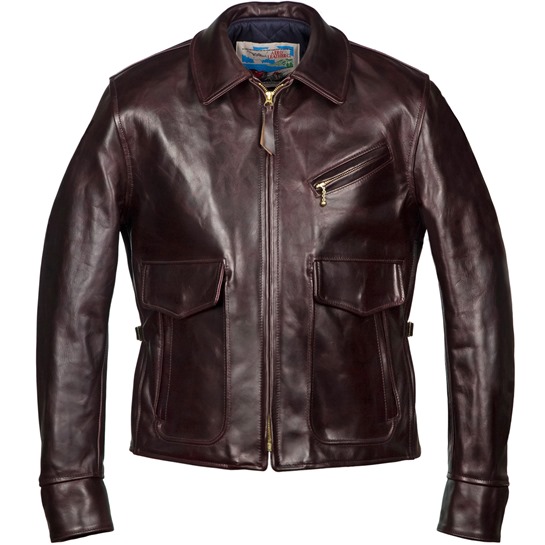Wear it, move in it, and treat it gently until the leather softens and molds to your body.
I’ve spent years testing jackets, repairing seams, and guiding readers on how to break in a leather jacket so it fits like a second skin. This guide blends hands-on tips, expert-backed care steps, and real-world mistakes I learned the hard way. Read on for clear, practical methods to speed up the process safely, protect your jacket’s value, and make your leather feel perfectly worn in.

Understand your leather before you start
Different leather reacts to wear in different ways. Full-grain leather is thick and will soften slowly. Top-grain leather is thinner and breaks in faster. Suede and nubuck take wear differently than smooth leather and need gentler handling.
Know the jacket’s lining, hardware, and any protective finishes. These change how you can apply heat, conditioners, or stretching. If the jacket has a protective coating, aggressive conditioning can leave a greasy look. Treat each jacket based on how it’s made.
I always check the care label and run a small patch test before any treatment. This prevents surprises and preserves the jacket’s look.

Prepare the jacket and yourself
Preparation prevents damage and speeds results. Start by cleaning the jacket gently. Use a soft brush for dust or a damp cloth for mild dirt. Avoid soaking leather.
Gather tools you may need:
- Soft cloth for cleaning and applying conditioners.
- Leather conditioner or cream made for the leather type.
- A padded hanger or jacket form to maintain shape.
- A hairdryer on low heat or a steam source for careful softening.
- Thick gloves and a small spray bottle of distilled water.
Fit matters. Try the jacket over layers you plan to wear. This helps identify tight spots that need stretching. If you plan on altering the jacket, do so before intensive break-in to avoid warping.
Step-by-step methods to break in a leather jacket
Use one main method at a time. Combine methods slowly. Overdoing it risks drying or cracking the leather.
- Wear it daily
- Wear the jacket for short periods the first week.
- Move naturally—reach, sit, and bend to create flexible creases.
- Gradually increase wear time. Natural body heat and motion are the safest way to break in leather.
- Use leather conditioner
- Apply a small amount of conditioner to clean leather.
- Work it in with a soft cloth in circular motions.
- Let it absorb, then buff lightly. Conditioning keeps leather supple and helps it mold to your shape.
- Targeted stretching
- For tight shoulders or chest, use wearable stretching: put on the jacket and do arm movements.
- Use a stretching spray (distilled water mix) sparingly on tight areas and move in those spots.
- Never force seams or zippers.
- Heat and steam — carefully
- Steam at a distance or use a hairdryer on low heat while wearing the jacket.
- Move in the jacket as it warms to shape the leather.
- Keep heat brief and moderate to avoid drying oils out.
- Use a jacket form or padded hanger
- After wearing or conditioning, hang the jacket on a proper form.
- This helps maintain shoulder shape while remaining flexible.
- Break in lining and hardware
- Move zippers up and down and fasten snaps regularly to loosen them gently.
- Condition lining edges if they feel stiff, using a dry-cleaner-approved product as needed.
I used a mix of wearing and gentle conditioning on a stiff biker jacket. After two weeks of daily short wear and light conditioning twice, the shoulders loosened and the waist fit much better. Patience makes the leather last.

Care and maintenance while breaking in
Healthy leather breaks in better. Dry, cracked leather resists molding and breaks too fast in the wrong places. Follow these care rules.
- Clean lightly before conditioning. Dirt blocks absorption.
- Condition sparingly. Over-conditioning leaves a greasy film and attracts dust.
- Avoid water saturation. Small sprays for stretching are okay. Do not soak the jacket.
- Rotate wear. Let the leather rest between long sessions of wear.
- Store properly on a wide hanger in a cool, ventilated place. Avoid direct sunlight and heat sources.
I once conditioned too much. The jacket looked dark and streaky. A gentle buffing and a week of airing fixed it, but I learned to use very small amounts of product.

Common mistakes and how to avoid them
Many people rush the break-in and damage their jacket. Learn from common errors.
- Forcing the leather with excessive heat
- Too much heat dries oils and causes stiffness or cracks.
- Using household oils or lubricants
- Avoid olive oil, baby oil, or WD-40. They stain or break down leather fibers.
- Soaking leather to stretch it
- Water can warp and stiffen leather when it dries unevenly.
- Skipping patch tests
- Test any product in a hidden area first to check color change or residue.
- Ignoring seams and hardware
- Seams can become weak if stretched too quickly. Move zippers and snaps gently.
A jacket that’s treated well will age into a unique patina. Rushing leads to damage you can’t undo.

Timeline and realistic expectations
Breaking in leather takes time. Expect the largest changes in the first few weeks. Full molding may take months. The timeline depends on leather type, thickness, and how often you wear the jacket.
- First few days
- Small creases form where you move.
- First 1–2 weeks
- Jacket begins to soften across shoulders, elbows, and waist with consistent wear.
- 1–3 months
- Deeper molding and a more personalized fit appear.
- Beyond 3 months
- Patina, small scars, and character develop. The jacket becomes truly yours.
Be patient. Quick fixes may give temporary results but can reduce the jacket’s lifespan. I learned that short, daily wear outperforms one aggressive weekend of stretching every time.

When to get professional help
Some tasks are best left to pros. Seek a leather specialist if:
- The jacket shows deep cracks or flaking.
- You need major stretching beyond a few sizes.
- The lining or seams need repair.
- You’re unsure which product is safe for your leather.
A good specialist can restore oils, repair hardware, and stretch areas safely. Investing in a pro preserves value and guarantees a safer break-in.
Frequently Asked Questions of how to break in a leather jacket
What is the safest way to break in a leather jacket?
Wear it often for short periods and use a light leather conditioner. Natural body heat and motion are the gentlest and most reliable methods.
Can I use heat to speed up the process?
Yes, but use low, controlled heat like a hairdryer at a distance or steam briefly. Excessive heat can dry leather and cause cracking.
How often should I condition while breaking in leather?
Condition sparingly—about every 4–6 weeks during the break-in phase, depending on wear and climate. Too much product can leave a greasy film.
Will water damage my leather jacket if I use it to stretch?
Avoid soaking the jacket. Small, targeted sprays can help stretch, but water saturation risks warping and staining.
How long does it take for a leather jacket to feel broken in?
Expect noticeable changes in 1–2 weeks and a fully personalized fit in several months. The exact time varies by leather type and wear habits.
Conclusion
Breaking in a leather jacket combines patience, care, and the right techniques. Wear the jacket, treat it kindly with suitable conditioner, and use gentle stretching and heat only when needed. Avoid common mistakes and seek a pro for major repairs. Follow these steps and your jacket will reward you with a perfect fit and a rich, personalized patina.
Take action today: try a short daily wear routine and a small patch test of conditioner. Share your results or questions below, or subscribe for more leather care tips.







